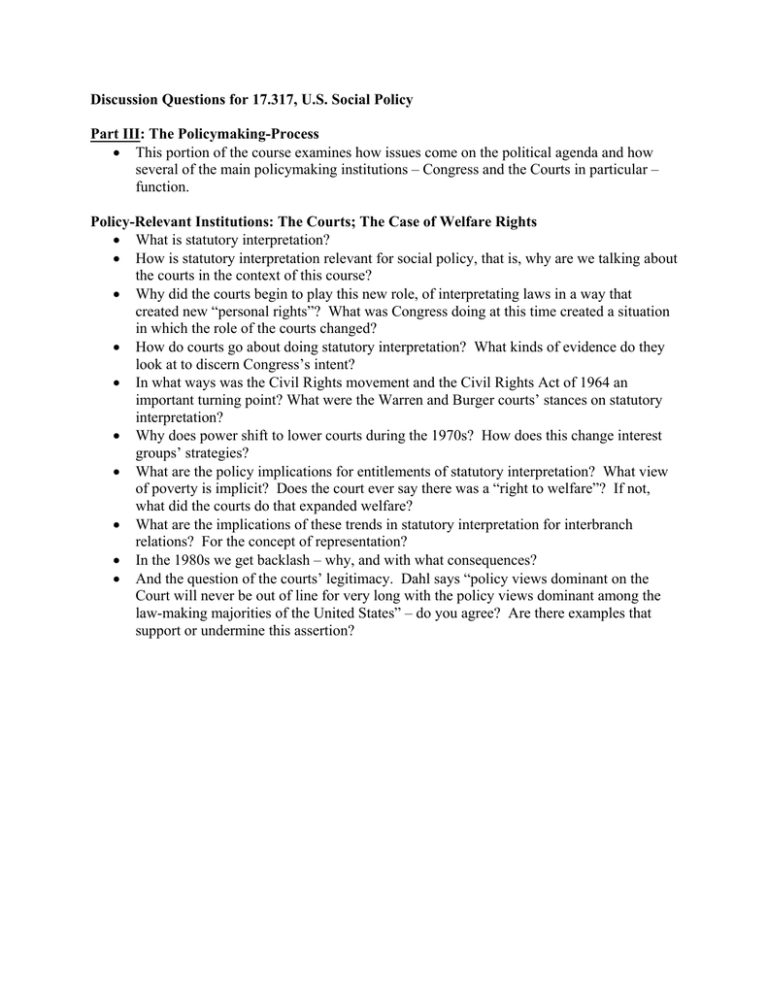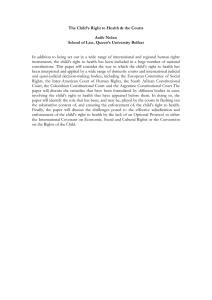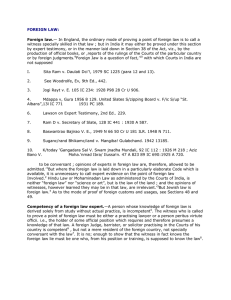Discussion Questions for 17.317, U.S. Social Policy Part III: The Policymaking-Process
advertisement

Discussion Questions for 17.317, U.S. Social Policy Part III: The Policymaking-Process • This portion of the course examines how issues come on the political agenda and how several of the main policymaking institutions – Congress and the Courts in particular – function. Policy-Relevant Institutions: The Courts; The Case of Welfare Rights • What is statutory interpretation? • How is statutory interpretation relevant for social policy, that is, why are we talking about the courts in the context of this course? • Why did the courts begin to play this new role, of interpretating laws in a way that created new “personal rights”? What was Congress doing at this time created a situation in which the role of the courts changed? • How do courts go about doing statutory interpretation? What kinds of evidence do they look at to discern Congress’s intent? • In what ways was the Civil Rights movement and the Civil Rights Act of 1964 an important turning point? What were the Warren and Burger courts’ stances on statutory interpretation? • Why does power shift to lower courts during the 1970s? How does this change interest groups’ strategies? • What are the policy implications for entitlements of statutory interpretation? What view of poverty is implicit? Does the court ever say there was a “right to welfare”? If not, what did the courts do that expanded welfare? • What are the implications of these trends in statutory interpretation for interbranch relations? For the concept of representation? • In the 1980s we get backlash – why, and with what consequences? • And the question of the courts’ legitimacy. Dahl says “policy views dominant on the Court will never be out of line for very long with the policy views dominant among the law-making majorities of the United States” – do you agree? Are there examples that support or undermine this assertion?




